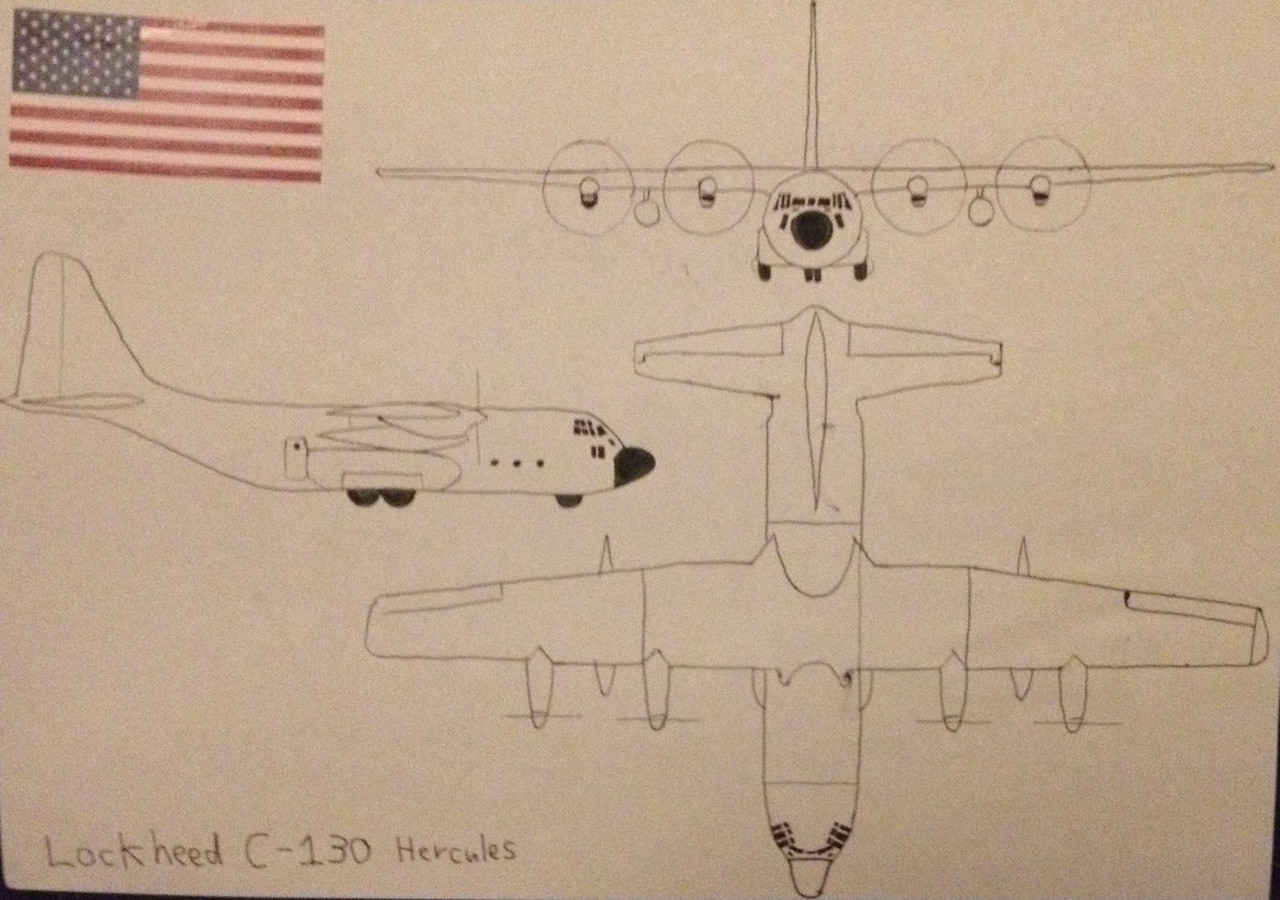HOME | DD
 ShieldWing1996 — Lockheed C-130 Hercules
ShieldWing1996 — Lockheed C-130 Hercules

Published: 2018-11-14 00:37:10 +0000 UTC; Views: 454; Favourites: 8; Downloads: 2
Redirect to original
Description
The Lockheed C-130 Hercules is an American four-engine turboprop military transport aircraft designed and built originally by Lockheed (now Lockheed Martin). Capable of using unprepared runways for takeoffs and landings, the C-130 was originally designed as a troop, medevac, and cargo transport aircraft. The versatile airframe has found uses in a variety of other roles, including as a gunship (AC-130), for airborne assault, search and rescue, scientific research support, weather reconnaissance, aerial refueling, maritime patrol, and aerial firefighting. It is now the main tactical airlifter for many military forces worldwide. More than 40 variants of the Hercules, including a civilian one marketed as the Lockheed L-100, operate in more than 60 nations.The C-130 entered service with the U.S. in 1956, followed by Australia and many other nations. During its years of service, the Hercules family has participated in numerous military, civilian and humanitarian aid operations. In 2007, the C-130 became the fifth aircraft to mark 50 years of continuous service with its original primary customer, which for the C-130 is the United States Air Force. The C-130 Hercules is the longest continuously produced military aircraft at over 60 years, with the updated Lockheed Martin C-130J Super Hercules currently being produced.
General characteristics
Crew: five (two pilots, navigator, flight engineer and loadmaster)
Capacity:
C-130E/H/J cargo hold: length, 40 ft (12.19 m); width, 119 in (3.02 m); height, 9 ft (2.74 m). Rear ramp: length, 123 in (3.12 m); width, 119 in (3.02 m)
C-130J-30 cargo hold: length, 55 ft (16.76 m); width, 119 in (3.02 m); height, 9 ft (2.74 m). Rear ramp: length, 123 inches (3.12 m); width, 119 in (3.02 m)
92 passengers or
64 airborne troops or
74 litter patients with 5 medical crew or
6 pallets or
2–3 Humvees or
2 M113 armored personnel carriers
1 CAESAR self-propelled howitzer
Payload: 45,000 lb (20,400 kg)
Length: 97 ft 9 in (29.8 m)
Wingspan: 132 ft 7 in (40.4 m)
Height: 38 ft 3 in (11.6 m)
Wing area: 1,745 ft2 (162.1 m2)
Empty weight: 75,800 lb (34,400 kg)
Useful load: 72,000 lb (33,000 kg)
Max. takeoff weight: 155,000 lb (70,300 kg)
Powerplant: 4 × Allison T56-A-15 turboprops, 4,590 shp (3,430 kW) each
Propellers: 4 propellers
Propeller diameter: 13.5 ft (4.1 m)
Performance
Maximum speed: 320 knots (366 mph, 592 km/h) at 20,000 ft (6,060 m)
Cruise speed: 292 kts (336 mph, 540 km/h)
Range: 2,050 nmi (2,360 mi, 3,800 km)
Service ceiling: 33,000 ft (10,060 m) empty;[93] 23,000 ft (7,077 m) with 42,000 lb payload (19,090 kg)
Rate of climb: 1,830 ft/min (9.3 m/s)
Takeoff distance: 3,586 ft (1,093 m) at 155,000 lb (70,300 kg) max gross weight;[92] 1,400 ft (427 m) at 80,000 lb (36,300 kg) gross weight[94]
Avionics
Westinghouse Electronic Systems (now Northrop Grumman) AN/APN-241 weather and navigational radar




















